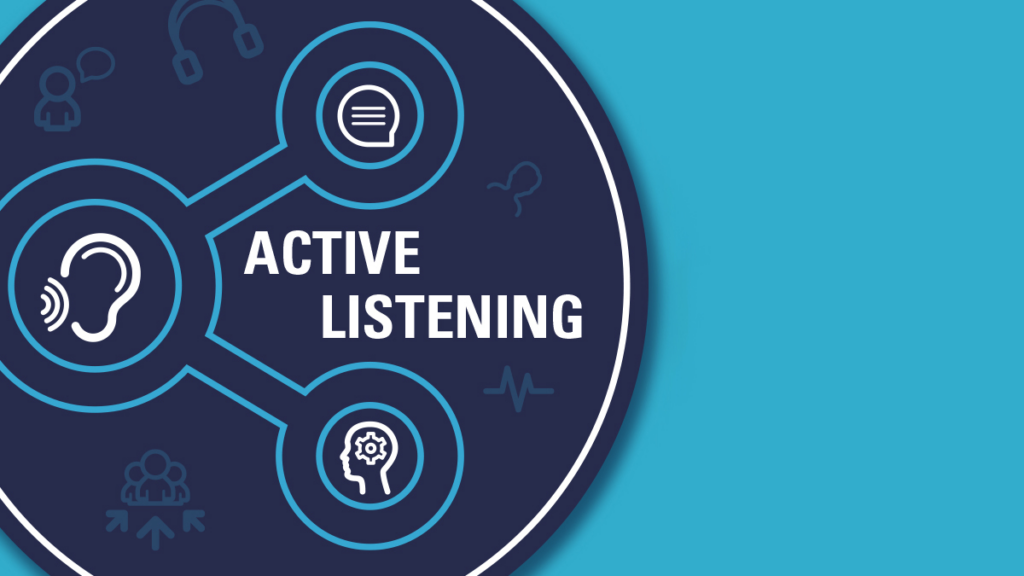
This blog is the part of an ongoing bi-monthly series titled Building Great Organizations that highlights best practices and tools to promote highly innovative, productive, and positive workplace culture. Written by Anne Partington.

For the foreseeable future, the workplace will be in a state of transition where effective communication, aligned decision-making, and team agility will continue to be the building blocks of great organizations.
In addition to the ongoing risk due to the COVID-19 pandemic, workplaces are elevating conversations and actions around diversity, equity, and inclusion in society, as well as making everyday decisions regarding business investments in people, operations, and future strategy.
To lead through these turbulent times, leaders will need even more evolved listening skills to promote understanding and aligned action. Listening — more importantly, active listening — is one of those tools that can have a major impact on workplace effectiveness.
The Basics: What is Active Listening?
Active listening is about connecting to the person with whom you are communicating to understand if the complete message you heard is the message the other party intended.
Active listening is about effective listening. It requires attention, an open attitude, and ongoing adjustments. Let’s talk about the key elements of active listening.
More than 70 percent of communication is non-verbal. Body language on web-based meetings is even more difficult to discern and understand. Therefore, whether meeting in person or in web meetings, pay attention to your own facial expressions, gestures, and nodding.
Best practices around non-verbal active listening cues:
- Be mindful of body language, e.g., avoid crossed arms
- Facial expression
- Pay attention
- Nodding, maintain eye contact
- Leaning in
Reach Alignment through Inquiry Questions
Have you ever been in a conversation where you wondered if the person you were speaking with was actually listening? Inquiry questions are a great way to ensure alignment of messaging. You can use different types of questions whether you are receiving the information or providing the information for general communication or to decision makers. There are three broad areas of questions that can demonstrate active listening engagement:
Clarifying
- Tell me more about …?
- How did …?
- What do you think …?
- Would you mind sharing with us your thoughts on this topic?
Holding Judgement & Reflecting
- Paraphrase to ensure understanding
- Keep paraphrase brief
- Ask for confirmation that your paraphrase reflects the intention
- Silence is ok – processing time. Refrain from filling it whether you need the time or someone else has paused to reflect
Summarize & Share
- Several points are paraphrased ending with a question for confirmation.
- Summarize the key points discussed, followed with a “Did I get that right?”
Fostering Trust & Respect
Using active listening techniques can foster communication with a foundation of trust and respect. Regardless of the industry or workplace, starting with active listening demonstrates a listener’s engagement and willingness to have a conversation based on willingness to understand first.
By asking questions from a non-threatening and information-gathering perspective, communication is more accurate and provides a framework to work through conflict. Furthermore, by ensuring that there is a clear understanding, active listening can build forward momentum and propel teams into aligned action on the next steps. While active listening creates a great team atmosphere, it also forms the basis for effective planning and productivity. So, the next time your team may be struggling in a meeting, try using an active listening question.
Resources
What Great Listeners Actually Do by Jack Zenger and Joseph Folkman Harvard Business Review
Use Active Listening to Coach Others Center for Creative Leadership